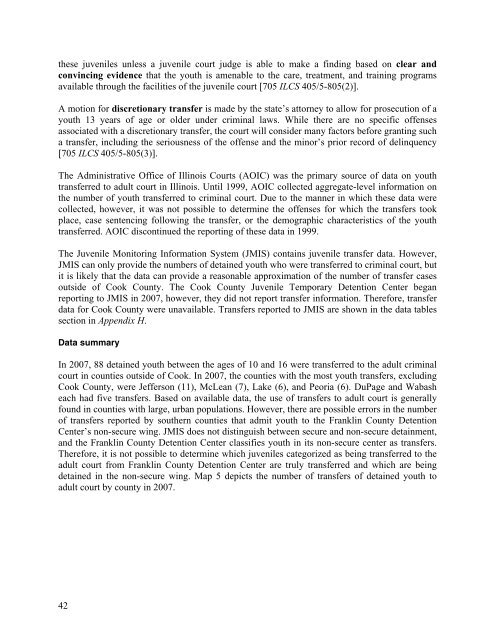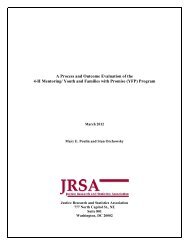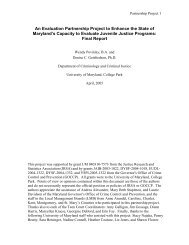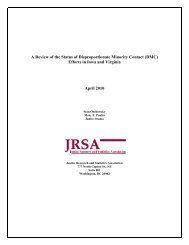Juvenile Justice System and Risk Factor Data - Illinois Criminal ...
Juvenile Justice System and Risk Factor Data - Illinois Criminal ...
Juvenile Justice System and Risk Factor Data - Illinois Criminal ...
You also want an ePaper? Increase the reach of your titles
YUMPU automatically turns print PDFs into web optimized ePapers that Google loves.
these juveniles unless a juvenile court judge is able to make a finding based on clear <strong>and</strong><br />
convincing evidence that the youth is amenable to the care, treatment, <strong>and</strong> training programs<br />
available through the facilities of the juvenile court [705 ILCS 405/5-805(2)].<br />
A motion for discretionary transfer is made by the state’s attorney to allow for prosecution of a<br />
youth 13 years of age or older under criminal laws. While there are no specific offenses<br />
associated with a discretionary transfer, the court will consider many factors before granting such<br />
a transfer, including the seriousness of the offense <strong>and</strong> the minor’s prior record of delinquency<br />
[705 ILCS 405/5-805(3)].<br />
The Administrative Office of <strong>Illinois</strong> Courts (AOIC) was the primary source of data on youth<br />
transferred to adult court in <strong>Illinois</strong>. Until 1999, AOIC collected aggregate-level information on<br />
the number of youth transferred to criminal court. Due to the manner in which these data were<br />
collected, however, it was not possible to determine the offenses for which the transfers took<br />
place, case sentencing following the transfer, or the demographic characteristics of the youth<br />
transferred. AOIC discontinued the reporting of these data in 1999.<br />
The <strong>Juvenile</strong> Monitoring Information <strong>System</strong> (JMIS) contains juvenile transfer data. However,<br />
JMIS can only provide the numbers of detained youth who were transferred to criminal court, but<br />
it is likely that the data can provide a reasonable approximation of the number of transfer cases<br />
outside of Cook County. The Cook County <strong>Juvenile</strong> Temporary Detention Center began<br />
reporting to JMIS in 2007, however, they did not report transfer information. Therefore, transfer<br />
data for Cook County were unavailable. Transfers reported to JMIS are shown in the data tables<br />
section in Appendix H.<br />
<strong>Data</strong> summary<br />
In 2007, 88 detained youth between the ages of 10 <strong>and</strong> 16 were transferred to the adult criminal<br />
court in counties outside of Cook. In 2007, the counties with the most youth transfers, excluding<br />
Cook County, were Jefferson (11), McLean (7), Lake (6), <strong>and</strong> Peoria (6). DuPage <strong>and</strong> Wabash<br />
each had five transfers. Based on available data, the use of transfers to adult court is generally<br />
foun d in counties with large, urban populations. However, there are possible errors in the number<br />
of transfers reported by southern counties that admit youth to the Franklin County Detention<br />
Center’s non-secure wing. JMIS does not distinguish between secure <strong>and</strong> non-secure detainment,<br />
<strong>and</strong> th e Franklin County Detention Center classifies youth in its non-secure center as transfers.<br />
Therefore, it is not possible to determine which juveniles categorized as being transferred to the<br />
adult court from Franklin County Detention Center are truly transferred <strong>and</strong> which are being<br />
detained in the non-secure wing. Map 5 depicts the number of transfers of detained youth to<br />
adult court by county in 2007.<br />
42

















